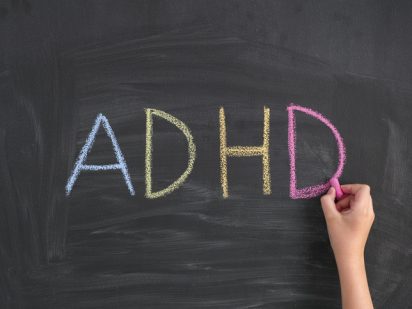Attention Deficit Disorder, or ADHD, is defined by the National Institute of Mental Health as a disorder marked “by ongoing pattern of inattention and/or hyperactivity-impulsivity that interferes with functioning or development.”
The American Psychiatric Association estimates that 8.4 percent of children, as well as 2.5 percent of adults, have ADHD. It is often identified in school-aged children at a time when they may have trouble paying attention, controlling impulsive behaviors, or being overly active.
Children that have ADHD tend to be hyperactive, explained William A. Sisa, MD, a pediatrician with Trinity Health. “They are very impulsive and sometimes they don’t pay attention.”
ADHD can have a negative effect on a child’s academic function and social interaction, which makes it important to speak to a pediatrician if a child shows signs of ADHD, Dr. Sisa noted.
A child with ADHD might:
- Daydream a lot
- Forget or lose things a lot
- Squirm or fidget
- Talk too much
- Make careless mistakes or take unnecessary risks
- Have a hard time resisting temptation
- Have trouble taking turns
- Have difficulty getting along with others
Symptoms typically first appear between the ages of three and six and the average age of diagnosis is seven years old, the ADD Resource Center said.
If any of these symptoms present, it is important to speak with a pediatrician to get a diagnosis.
Pediatricians use the NICHQ (National Institute for Children’s Health Quality) Vanderbilt Assessment Scales to help diagnose ADHD. Two copies of the form are given to the parent, one for them to complete and another for the child’s teacher to complete, Dr. Sisa said.
Once ADHD is diagnosed, the right treatment option is found. Behavior intervention therapy is the first method of treatment that is attempted. Such intervention may include school-based interventions, social skills training, and psychotherapy. If that does not improve things, combination therapy which involve behavior intervention and use of of medication may be employed. The common medication is a stimulant medication called Methylphenidate, a controlled substance used to treat ADHD, is used. Depending on the severity of ADHD, therapy and medication can be done at the same time, Dr. Sisa added.
According to the ADD Resource Center, it is common for a person to have comorbid conditions either in tandem with ADHD or one after the other. Those conditions include anxiety, autism spectrum disorders, depression, eating disorders, obsessive compulsive disorders (OCD), post-traumatic stress disorder (PTSD). “Having comorbid factors also means you have to think about referring to specialists to help with management of the child,” Dr. Sisa explained. “If the child is having conditions like conduct disorder, etc., you can bring on a child psychologists to help with that.”
ADHD symptoms can continue through adolescence and adulthood; in fact, between 30 to 70 percent of children with ADHD continue having symptoms into adulthood. While some people with ADHD have fewer symptoms as they get older, some adults continue to have major symptoms that interfere with daily functioning, Mayo Clinic said.
According to Mayo Clinic, signs of adult ADHD can include:
- Impulsiveness
- Disorganization and problems prioritizing
- Poor time management skills
- Problems focusing on a task
- Trouble multitasking
- Excessive activity or restlessness
- Poor planning
- Low frustration tolerance
- Frequent mood swings
- Problems following through and completing tasks
- Hot temper
- Trouble coping with stress
Trinity Health’s Pediatric department is dedicated to providing compassionate, patient-focused care and education for children and their families.
If you are an adult and any of the symptoms for ADHD present, speak with your primary care provider.

